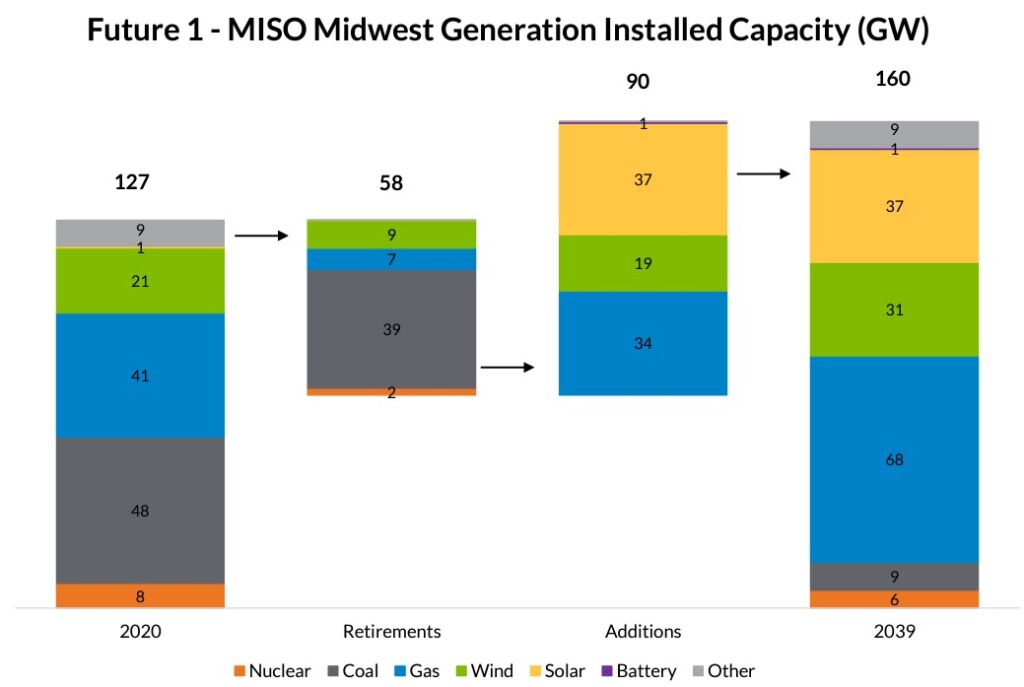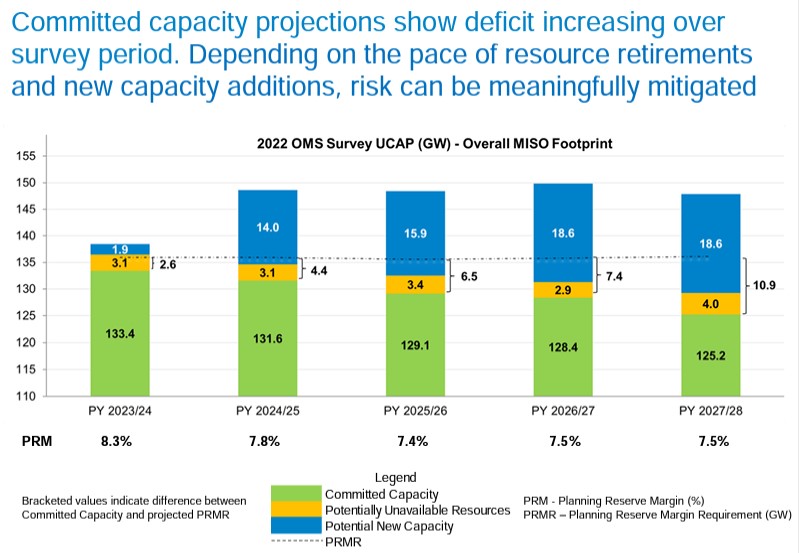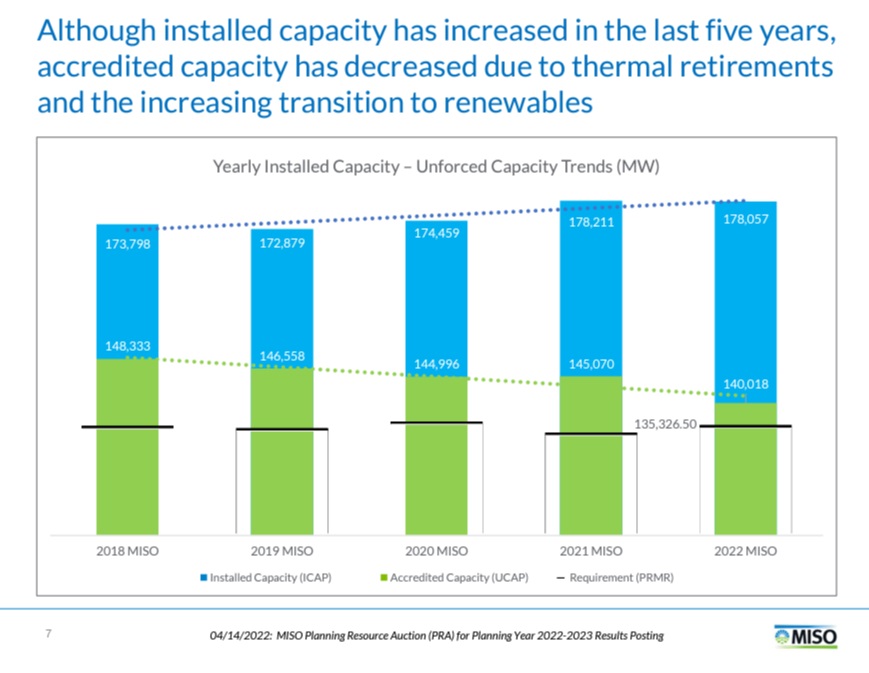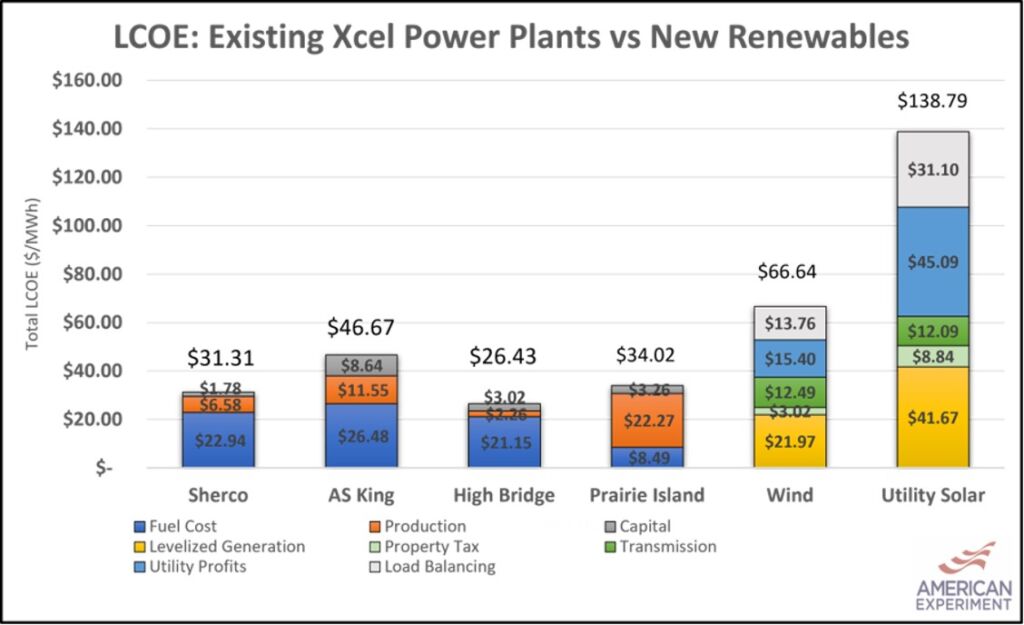MISO approves $10 billion in new transmission lines to subsidize wind and solar
The Board of Directors for the regional electric grid to which Minnesota belongs, Midcontinent Independent Systems Operator (MISO), recently voted to approve nearly $10.3 billion in new transmission lines—$2 billion of which will be needed for projects in Minnesota— to effectively subsidize the expansion of 53,000 megawatts (MW) wind turbines and solar panels.
Unfortunately, MISO’s decision will do nothing to make the grid more reliable, and it will drive up electricity prices for Minnesota families and businesses.
More renewables, less reliability
It is easy for people to gloss over numbers like 53,000 MW because most people don’t know what a megawatt is. For context, the entire state of Minnesota uses 8,244 MW of electricity on an average hour, meaning MISO is trying to incentivize nearly 6.5 times more capacity on the system than Minnesota hourly.
At the same time, MISO expects that the amount of reliable power plant capacity (think coal, nuclear, and natural gas) will decline by 14 GW, or 14.5 percent, as the amount of unreliable wind and solar increases.

MISO’s focus on transmission at a time when we are at a tipping point for grid reliability is distressing. This spring, MISO discovered it had a 1,200 MW capacity shortfall, meaning it did not have enough reliable power plants on its system to meet its peak summer demand and its margin of safety.
MISO documents show that the capacity shortfall could grow to 2,600 MW next year and grow to 10,900 MW by 2027 as reliable coal and nuclear power plants are shut down without building enough reliable natural gas capacity to replace them.

The end result is an electric grid that has more total power plant capacity on the system than today but less reliable power plant capacity than is currently keeping our lights on, as you can see in the graph below. This means Minnesotans will be paying to build more wind turbines, solar panels, and transmission lines, but will have less access to reliable power plants in the future. It is the California model and the worst of both worlds.

More transmission didn’t save Texas during Winter Storm Uri
Wind and solar advocates claim that more transmission will make the grid more reliable by making it possible to import wind or solar power from areas where the wind may be blowing or the sun may be shining, but these arguments conveniently leave out the fact that the massive transmission projects built in Texas to accommodate more wind didn’t save the Lone Star state from blackouts during the Polar Vortex of 2021.
The fact of the matter is, the wind isn’t always blowing somewhere, which means more transmission is not a serious solution to the reliability challenges we will face as more dispatchable capacity retires.
Wind and solar’s creative accounting
Wind and solar advocates love to pretend that these energy sources are the lowest cost sources of energy, but their calculus is entirely dependent upon ignoring the cost of transmission. This creative accounting trick conveniently forgets to include the cost of multi-billion dollar projects like the ones MISO approved on Monday.
In our analysis of Xcel Energy’s Integrated Resource Plan (IRP), American Experiment determined the transmission needed to integrate more wind and solar onto Xcel’s system was more than $12 per megawatt hour. Once other often-hidden costs are accounted for, wind and solar are much more expensive than most of our existing coal, nuclear, and natural gas fleet.

Instead of focusing on approving more transmission lines as a cross-subsidy to the wind and solar industry, MISO should be looking for ways to preserve the reliable generators they already have on their systems. MISO’s failure in this regard is bad news for Minneosta families and businesses that rely upon MISO to keep the lights on.